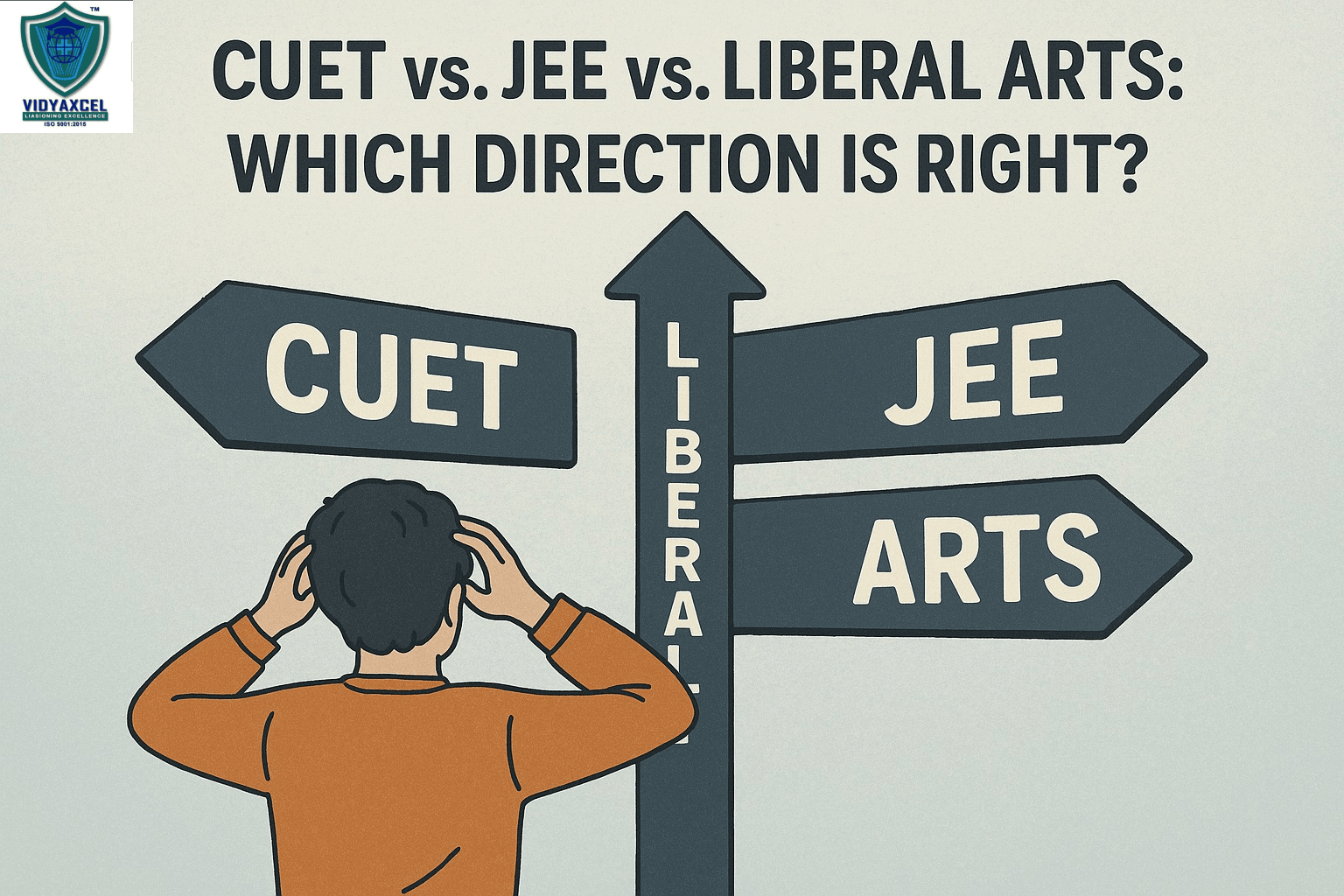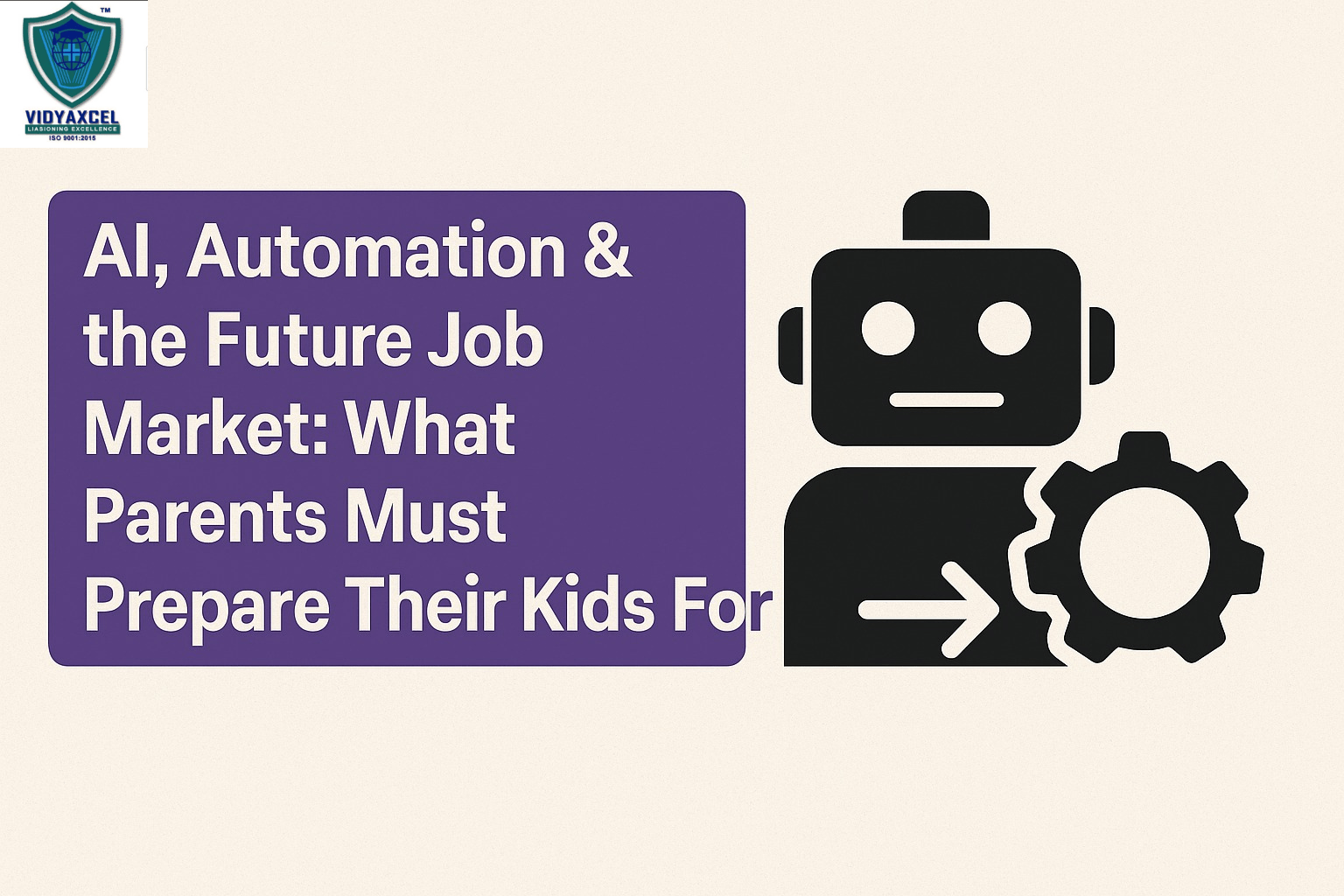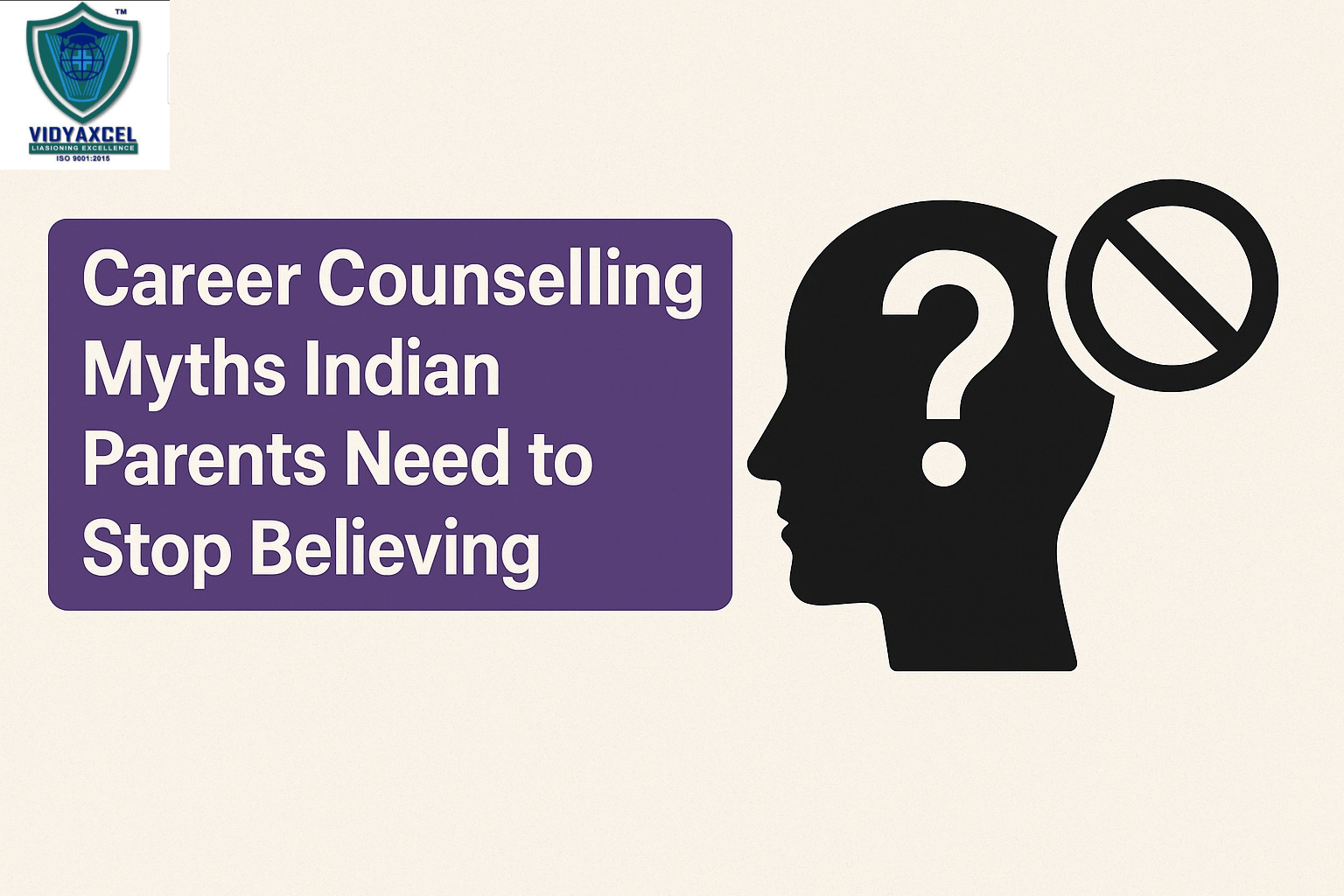Blog Details

17May
CUET vs. JEE vs. Liberal Arts: Which Direction Is Right?
Choosing a path after high school can feel overwhelming for students and parents alike. With emerging entrance exams like CUET (Common University Entrance Test), the ever-competitive JEE (Joint Entrance Examination), and growing interest in Liberal Arts education, families often wonder: which is the right choice? This article breaks down the core differences, advantages, and suitability of each path to help you make a more informed decision.
CUET: The Common University Entrance Test (CUET) is a centralized entrance exam introduced by the National Testing Agency (NTA) for admission to undergraduate programs in central and other participating universities across India. It tests students in language, domain-specific subjects, and general aptitude.
JEE: The Joint Entrance Examination (JEE) is a national-level test for admission to top engineering institutions like the IITs, NITs, IIITs, and GFTIs. It has two phases: JEE Main and JEE Advanced, and it emphasizes physics, chemistry, and mathematics.
Liberal Arts: Liberal Arts programs offer interdisciplinary undergraduate education combining humanities, sciences, social sciences, and more. These courses are often provided by private universities and emphasize critical thinking, communication, and real-world problem solving.
Key Differences
|
Criteria |
CUET |
JEE |
Liberal Arts |
|
Focus Area |
Broad range of domains |
STEM (especially Engineering) |
Interdisciplinary learning |
|
Institutions |
Central/State universities |
IITs, NITs, IIITs, GFTIs |
Private & Global Institutions |
|
Subjects Tested |
Language, domain subjects |
Physics, Chemistry, Mathematics |
Varies by institution |
|
Career Orientation |
Diverse fields |
Primarily engineering |
Flexible career pathways |
|
Skill Development |
Academic + Aptitude |
Technical depth |
Critical thinking, communication |
|
Admission Based On |
CUET score |
JEE score |
Essays, interviews, portfolios |
Who Should Choose What?
Choose CUET If:
- You’re interested in mainstream degrees like B.A., B.Sc., B. Com, etc.
- You prefer a broader range of academic subjects.
- You wish to study at reputed central/state universities like Delhi University, BHU, JNU, etc.
Choose JEE If:
- You’re strong in Math and Science.
- You aim to become an engineer, researcher, or work in tech.
- You’re prepared for rigorous competition and want to attend IITs/NITs.
Choose Liberal Arts If:
- You’re curious about multiple disciplines (like psychology, economics, design, data science).
- You prefer holistic education and small classroom learning.
- You are considering careers in media, business, international relations, or entrepreneurship.
Parental Guidance
For Parents:
- Don’t choose based solely on prestige or peer pressure.
- Observe your child’s strengths, interests, and learning style.
- Help them explore aptitude tests, career workshops, and career counselling.
- Recognize that success today comes from passion-aligned professions.
Real Student Scenarios
- Ananya scored 92% in boards and opted for CUET to join Delhi University for Psychology. She appreciated the subject-specific focus.
- Rohan cracked JEE Advanced and is now pursuing Mechanical Engineering at IIT Bombay. He was always hands-on with science experiments.
- Mehak chose a Liberal Arts degree at Ashoka University. She majors in Economics with minors in Creative Writing and Data Science. Her career goal is policy research.
The Verdict There is no one-size-fits-all answer. CUET offers a broad academic pathway, JEE opens doors to technical excellence, and Liberal Arts allows intellectual exploration. Your child’s personality, passion, and long-term goals should guide this decision.
Conclusion:
Instead of asking, “Which is better?” ask, “Which is better for my child?” Whether it’s CUET, JEE, or a Liberal Arts path, the right direction is one that aligns with your child’s unique abilities and aspirations. With support, self-awareness, and exploration, the ideal path will reveal itself.
FAQ’s
What is the main difference between CUET, JEE, and Liberal Arts admissions?
CUET is a standardized entrance test for a wide range of undergraduate programs in central and state universities. JEE is exclusively for engineering courses and tests physics, chemistry, and mathematics. Liberal Arts admissions are typically based on academic records, essays, interviews, and sometimes aptitude tests—not standardized national exams.
Is CUET easier than JEE?
Generally, yes. CUET covers a broader academic base and focuses more on language, domain-specific subjects, and general aptitude. JEE is highly competitive and specifically tests math and science skills at an advanced level.
Are Liberal Arts degrees useful in today’s job market?
Absolutely. Liberal Arts graduates are in demand for their adaptability, problem-solving, communication skills, and interdisciplinary knowledge. They often succeed in careers in business, media, policy, design, research, and entrepreneurship.
Can students appear for both CUET and JEE?
Yes. Students can take both exams if they are open to pursuing different academic directions—e.g., engineering through JEE and other bachelor’s programs through CUET.
Which path is better for students who are undecided about their career?
Liberal Arts programs are well-suited for students who have varied interests and want to explore multiple disciplines before choosing a specialization. They offer flexibility and broad exposure.
Our Office: West Bengal, Maharashtra & Delhi.
For More Infomation about admission in Medical, Engineering, Management & Study in Overseas Details.
View Current Study Overseas, Medical, Engineering & Management Admission Details Video.





